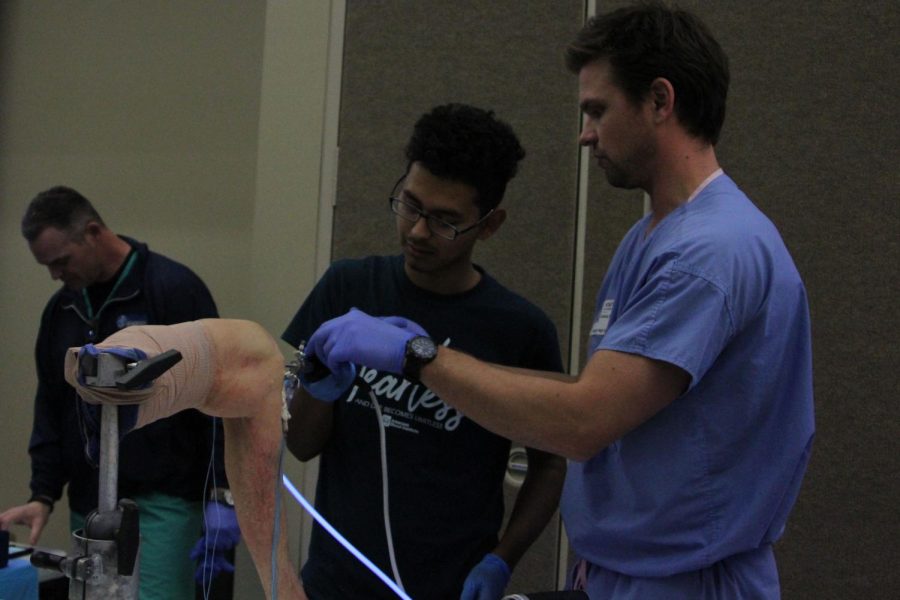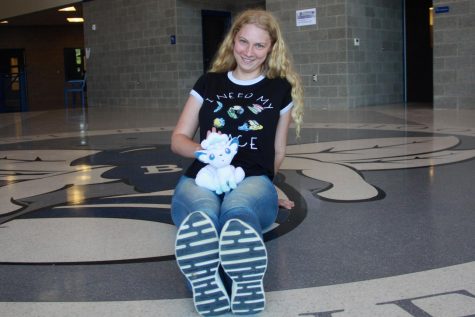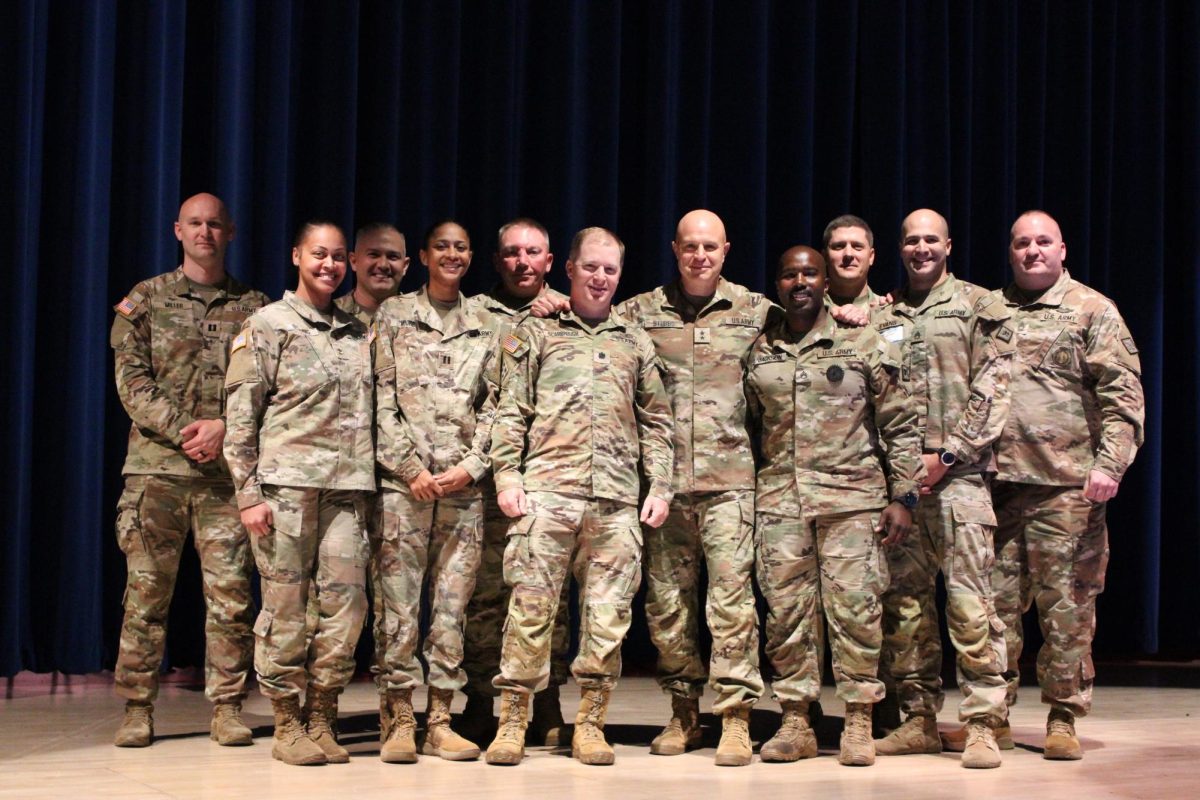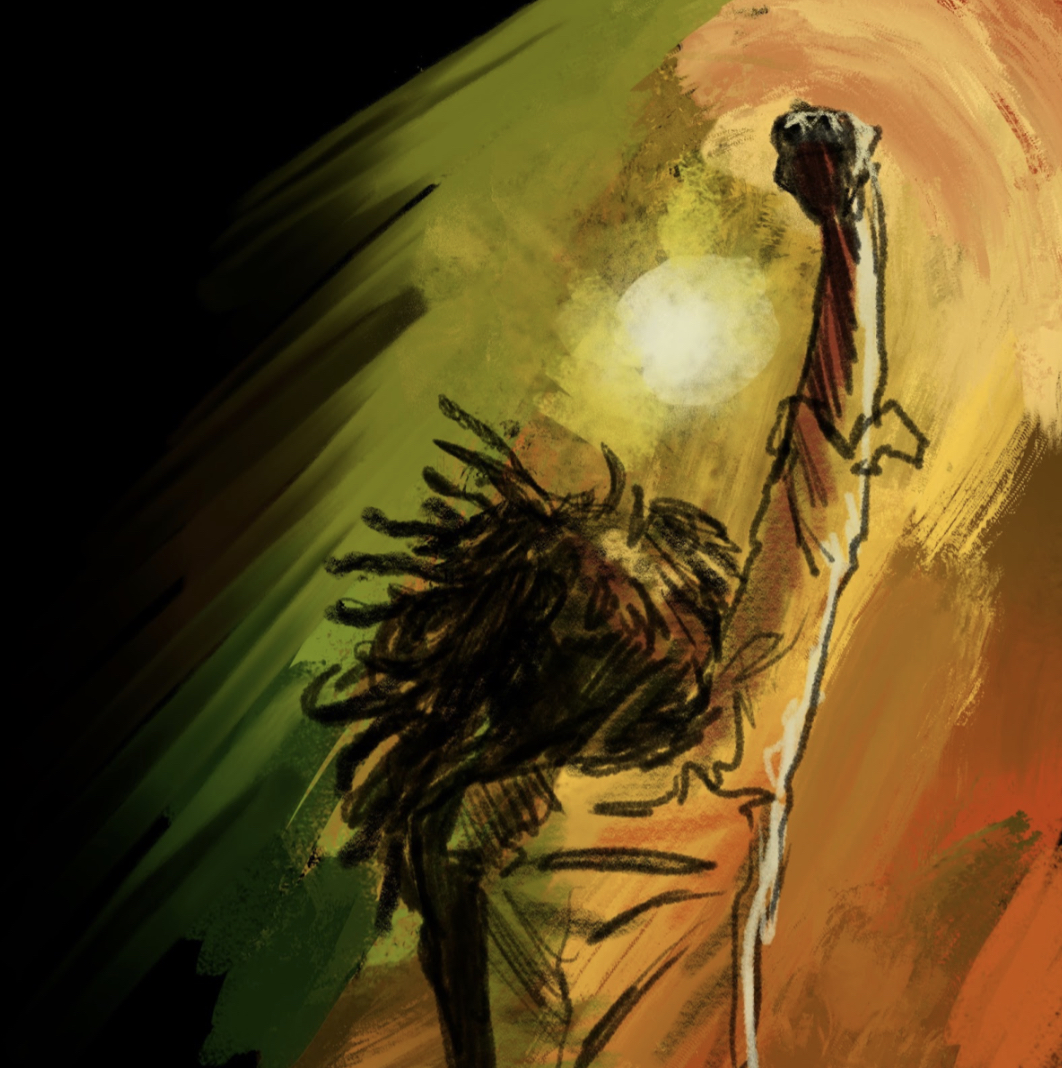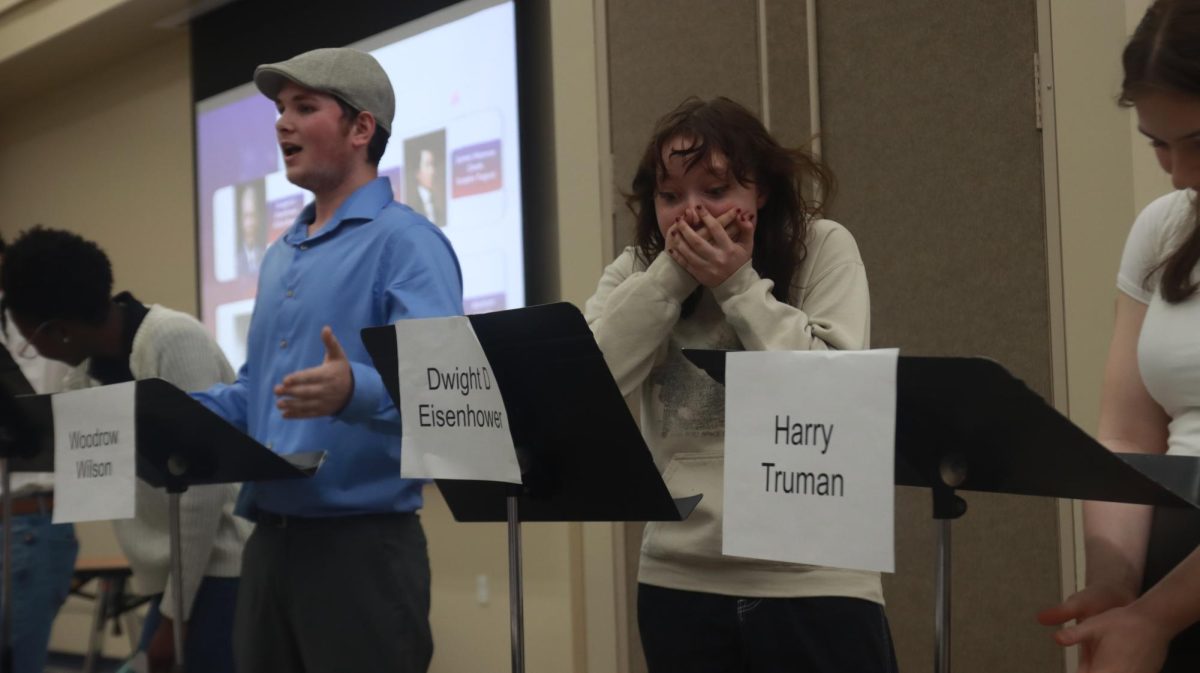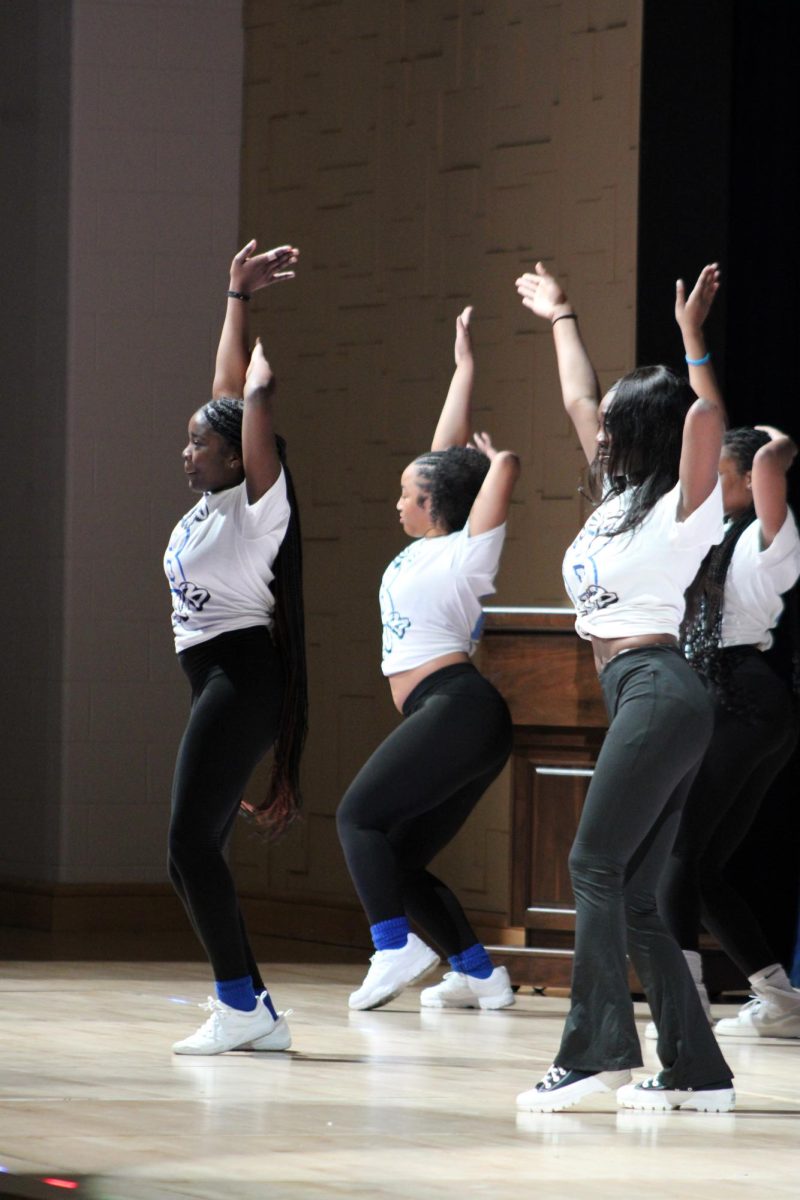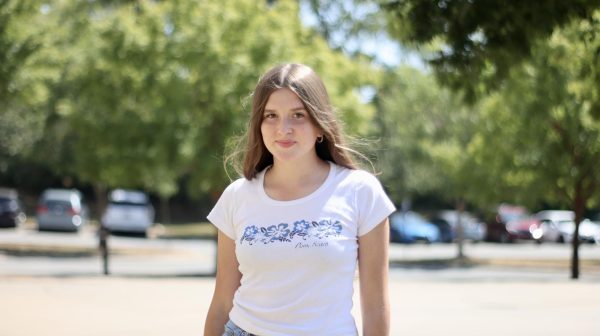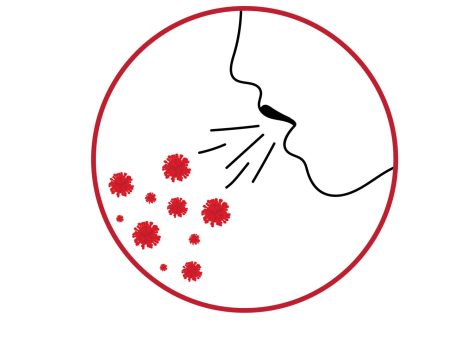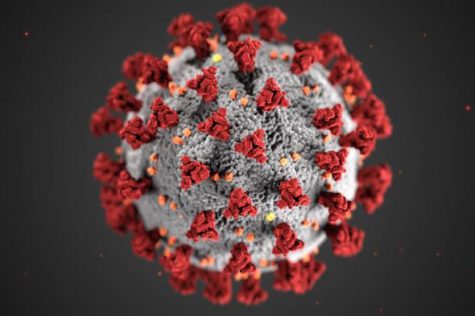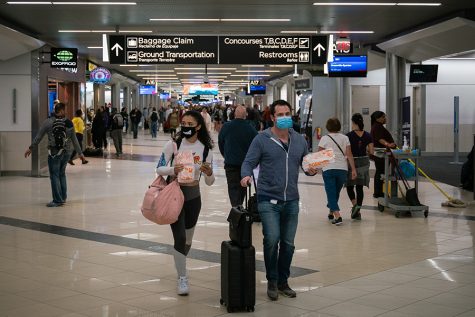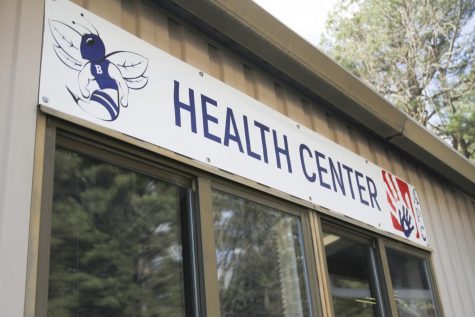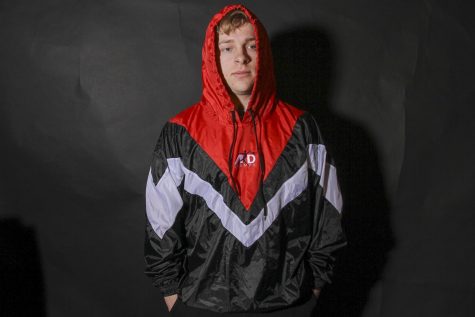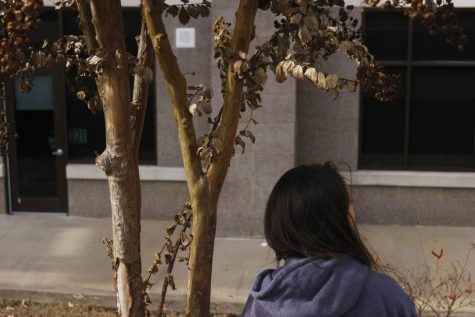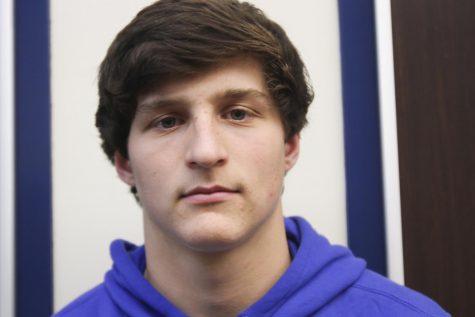Students View Cadaver Lab
February 28, 2019
A leg from a deceased woman who donated her body to science was set up on the front table as students filled seats of the multipurpose room Jan. 30. Thanks to the orthopedic medical device company Arthrex, Dr. Bill Hefley, and physician’s assistants, Anatomy and Sports Medicine students were able to view a chondroplasty, ACL replacement and a meniscus repair in real time.
Before the procedure began, Hefley went over a presentation on the parts of the knee and explained why he chose to become a surgeon.
“You get to meet all these great people, help people and cure people,” Hefley said. “You take these people who are in terrible pain, and you get to help relieve some of that pain.”
With the help of an assistant physician, Hefley filled the knee with water to expand and magnify the joint, making things easier to see. A tiny camera was inserted into the joint to allow students to observe the surgery. As silence filled the room, Hefley made a few jokes between scientific explanations to make students more comfortable.
“Do not try this at home,” Hefley said, as he inserted a needle into the knee.
With the camera, students could see pinkish cartilage floating in the water. The tendons were shiny and white, and when the leg was moved, bones in the knee moved in turn. At one point, Arthrex’s logo could be clearly seen on the instrument Hefley was using. Arthrex donated many of the instruments used in the procedure. One student who watched the procedure, senior Amber Atkin, said she was interested because she plans to pursue a career in healthcare.
“If anyone is going to do anything in the medical field, they should take Anatomy and try to see a cadaver lab,” Atkin said.
Because of strict regulations surrounding donated bodies, high school students rarely get to see a cadaver lab.
“If there was a zombie apocalypse, and there were no surgeons around, how many of you think you could replace someone’s ACL now?” Hefley said as he inserted the ACL replacement.
The ACL replacement was made of a man-made material, a copy of which was passed around to let students see how strong it was.
“Surgeons like to admire their own work,” Hefley said as he completed the replacement. “At the end, they say ‘Doesn’t that look good?’ and everybody says ‘Yes.’”
As coolers containing an arm and a leg were unpacked to allow for dissections, Hefley answered general questions about being a surgeon.
“The most tedious surgery is hand replants,” Hefley said. “You are reconnecting blood vessels bigger than a hair, but not by much. You use sutures you cannot see with the naked eye, [so] you have to use a magnifier.”
Hefley estimated he has performed 20,000 to 30,000 surgeries, and said he sometimes works several days at a time with short breaks for coffee, snacks and naps. During lower risk surgeries, the surgical team will often listen to music.
“You learn to work tired,” Hefley said.
Some more light hearted questions regarding medical television shows were asked as well.
“I do not watch ‘Grey’s Anatomy,’” Hefley said. “They always say the [medical terminology] wrong, they do the wrong stuff, [so] it is not very realistic. Usually [the characters] are just making out in a broom closet or something.”
When questions were over, students watched dissections of an arm and leg and were able to examine muscles and organs hands-on.
“I was a little nervous since it was a dead person, but it was really interesting,” Atkin said. “I would totally do it again.”


